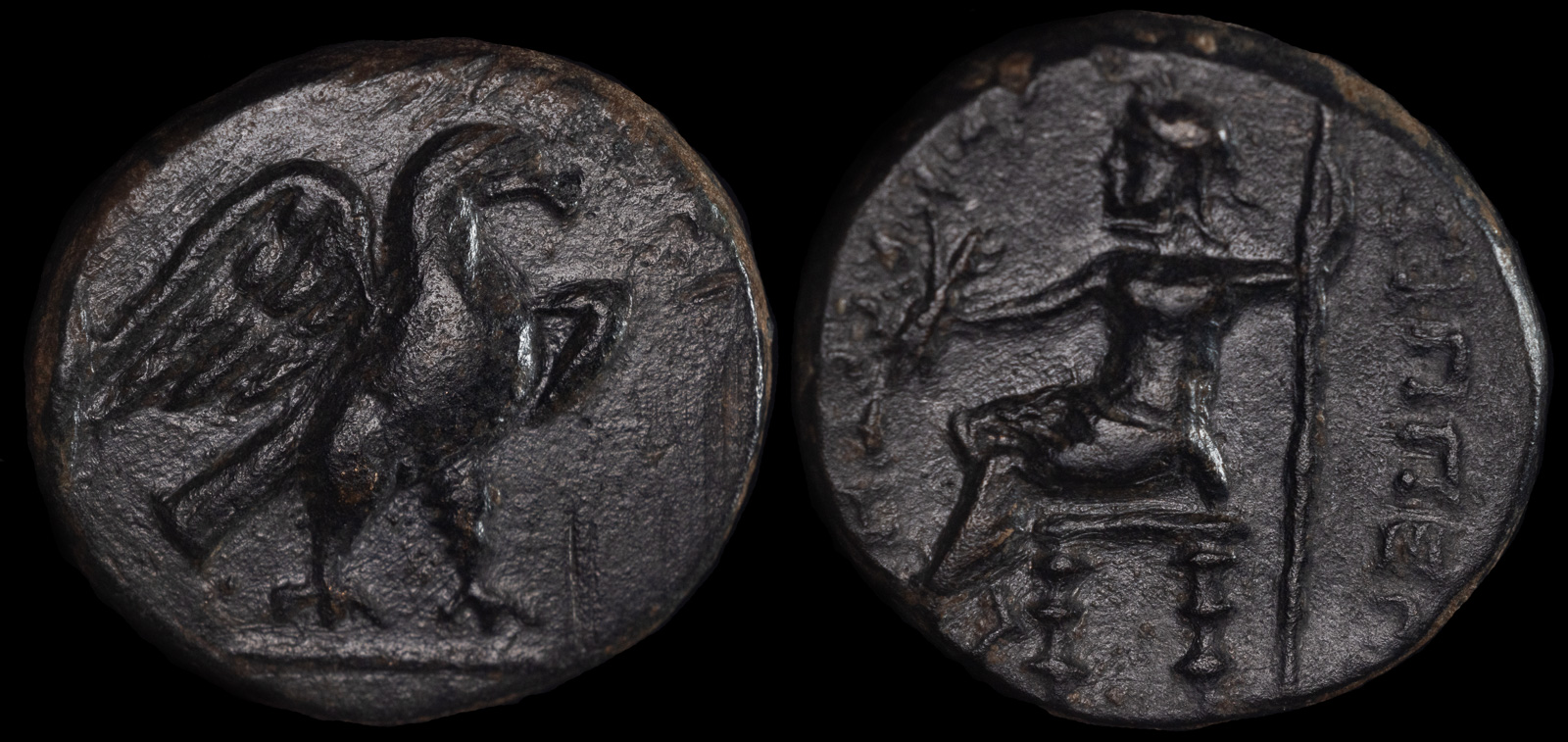
2nd-1st century BCE
Æ 16mm, 4,15g
Eagle standing to right, c/m: head(?) to right, within incuse circle /
Zeus seated to left, holding thunderbolt, [E]YIΠΠEΩ[N] to right, […]ΔECCTH to left
Unpublished, cf. HNO 1649 (temporary)
Like a number of ancient cities with rare coinage, we don’t know a lot about Euhippe. It was mentioned by Stephanus of Byzantium, but otherwise contemporary sources are dry.
It was named after Euhippos, whose son was Alabandos and was the namesake of nearby Alabanda. Supposedly, both were actual people, and Alabanda was praised so often by its citizens that others grew nauseated. The mother of Alabanda was Callirhoe, although we’re not sure which one.
In Greek, Euhippos literally means “having good horses.” The few remains of its ruins are near modern day Dalama, Turkey.
I do find the coinage intriguing though, both for its eagle on the obverse and Zeus in a similar manner to Alexander the Great‘s coinage on the reverse. It’s that resemblance that makes me wonder whether this coinage is earlier than the 2nd-1st century attribution and may be from the 3rd century BCE. FWIW, the seller where I bought this from believed it closed to 3rd century.
The eagle reminds me a bit of Ptolemaic coinage, though the resemblance isn’t strong.
The coinage of Euhippe is extremely rare. It did mint a few Roman provincials, but this type – clearly from a more independent period – has only two other examples sold that I could find. Of those, this is the best one.